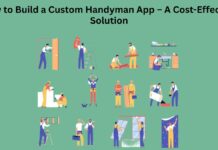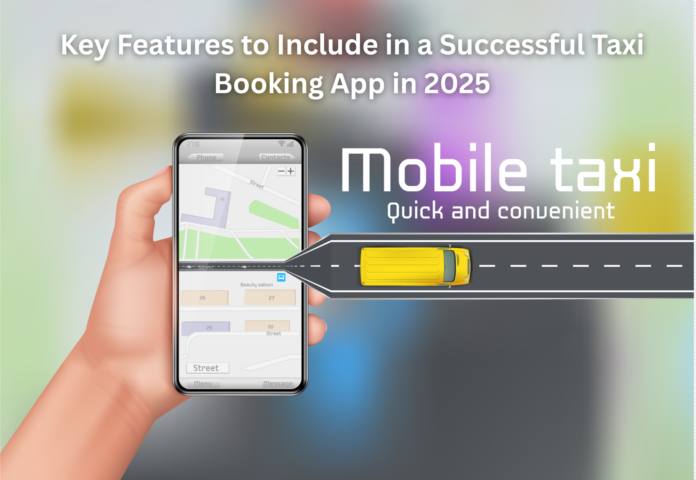The demand for modern, seamless transportation is skyrocketing. If you’re planning to launch a next-gen taxi service, choosing the best taxi app development company is the first and most critical step.
In 2025, riders expect more than just a ride. They want safety, speed, reliability, and personalization at their fingertips.
Let’s dive into the essential features that your taxi booking app must include to stay ahead of the curve.
Must-Have Passenger Features
1. User-Friendly Registration and Login
No one wants to fill out long forms. Enable one-click login with Google, Apple ID, or social media. Keep it smooth and simple.
2. Real-Time GPS Tracking
Users want to see their driver moving toward them in real time. This builds trust, especially during late-night rides or in unfamiliar areas.
3. Fare Estimation Before Booking
Show the estimated fare upfront. Includes distance, traffic, base fare, and dynamic pricing—no one likes hidden surprises.
4. Multiple Payment Gateways
Support all major payment modes—cards, UPI, wallets, and even cryptocurrency if possible. More options = more bookings.
5. Ride Scheduling and Advance Booking
Enable users to schedule rides in advance for airport pickups, meetings, or early commutes. Dependability is essential.
6. Travel History and Invoices
Allow users to view past rides, download receipts, and track their ride history. It adds professionalism and builds trust.
7. Live Ride Status and ETA Notifications
Push notifications for driver arrival, ride start, and end-time updates improve the overall user experience.
8. SOS Button and Safety Features
Built-in emergency buttons that share real-time location with emergency contacts or authorities are crucial, especially for solo travelers.
Essential Driver Features
9. Smart Driver Dashboard
Drivers should see upcoming rides, earnings, ratings, and schedules at a glance. A clutter-free dashboard boosts productivity.
10. In-App Navigation Support
Integrated navigation provides turn-by-turn directions, helping drivers reach their destinations efficiently, even in heavy traffic.
11. Earnings Reports and Analytics
Weekly earnings, tips, bonuses, and mileage reports should be accessible inside the app to keep drivers informed and motivated.
12. Rating and Feedback System
Allow riders to rate drivers and vice versa. This fosters a quality-driven ecosystem and helps identify and weed out poor performers.
13. Easy Ride Acceptance/Decline
Drivers should be able to accept or reject rides with a single tap, along with info on pickup distance and fare.
Admin Panel Features
14. Powerful Admin Dashboard
Track all ride activity, monitor transactions, and control the app from one central panel. Visibility is power.
15. Fleet Management Tools
Easily manage drivers, vehicles, licenses, and compliance. Automated alerts for maintenance and renewals save time.
16. User Management (Drivers & Riders)
Admins should be able to deactivate, verify, or blacklist users and drivers instantly based on behavior or reports.
17. Real-Time Reporting and Analytics
Track KPIs like completed rides, revenue, ride cancellations, driver performance, and app usage trends.
18. Promotions, Offers, and Loyalty Programs
Push custom coupon codes, discounts, and rewards to users. Keeping existing users is less expensive than bringing in new ones.
Advanced Technologies to Consider
19. AI-Based Route Optimization
Use machine learning to find the fastest, least congested routes—saving time and fuel.
20. Chatbots and Virtual Assistants
Answer FAQs, assist with bookings, or handle cancellations via AI-driven bots.
21. Voice Search Integration
Let users search for destinations or book rides using voice commands. It’s intuitive and faster.
22. Blockchain for Payment Security
Enable transparent, tamper-proof transactions—especially for international users or corporate accounts.
UX/UI Considerations
23. Clean Interface Design
Minimalist, intuitive design is key. Make sure even non-tech-savvy users can navigate with ease.
24. Accessibility Features
Includes text resizing, screen readers, and dark mode. A more inclusive app reaches more users.
Monetization Options
25. Commission Model
Charge drivers a percentage per ride. It’s the most popular and scalable revenue stream.
26. Subscription Plans
Offer premium subscriptions to riders for benefits like zero surge pricing or priority support.
27. Ads and Sponsored Rides
Promote local businesses or partner with brands for sponsored ride promotions inside the app.
Testing and Launch Strategy
Run alpha and beta tests, gather user feedback, fix bugs, and launch a marketing campaign. A smooth rollout matters more than a rushed one.
Conclusion
Creating a taxi booking app in 2025 is not just about writing code; it’s about addressing real problems through intelligent features, an elegant design, and cutting-edge technology.
Whether you’re a startup or an enterprise expanding into ride-hailing. Including these essential features will put you on the fast track to success.
Pick the right development partner, stay updated with emerging trends, and always prioritize user experience. Your app won’t just survive in the competitive market—it’ll thrive.
Frequently Asked Questions
How long does it take to build a taxi booking app?
Typically, 3 to 6 months, depending on the features, team size, and testing phases involved.
What are the common revenue models for a taxi app?
Commission per ride, subscription plans, and ad-based monetization are the most widely used models.
How do safety features impact user retention?
Massively. Riders feel more secure with SOS buttons, emergency contacts, and trip sharing, leading to higher retention rates.
Can I integrate electric vehicles (EVs) into my taxi app fleet?
Absolutely. Many modern taxi apps are adding EV options, along with battery status monitoring and EV-compatible routing.




















![Taxi Booking App Development Companies in the USA [2024] Taxi Booking App Development Companies in USA](https://www.thetechnoverts.com/wp-content/uploads/2024/05/Taxi-Booking-App-Development-Companies-in-USA-218x150.jpg)

